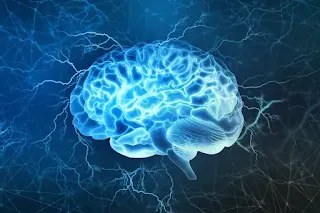New Discovery Could Prevent Brain Cell Loss in Parkinson’s Disease
 |
| Loss of primary cilia in striatal cells prevents them from receiving signals, halting neuroprotective factor production (Shutterstock) / Aljazeera.net |
Researchers from Stanford University have identified molecular inhibitors that could stop the death of brain cells in a specific type of Parkinson’s disease, raising hope for a new treatment strategy that goes beyond symptom management.
This study, published in Science Signaling (July 2025), examined a form of Parkinson’s caused by a single genetic mutation. This mutation increases the activity of the enzyme leucine-rich repeat kinase 2 (LRRK2), disrupting the brain’s self-protective mechanisms.
Parkinson’s Disease: A Silent Degeneration
Parkinson’s disease is commonly recognized by tremors at rest, but according to biochemistry professor Dr. Susan Pfeffer, early signs such as constipation, loss of smell, and REM sleep behavior disorder can appear up to 15 years before diagnosis.
Approximately 25% of Parkinson’s cases have a genetic origin, with LRRK2 mutations being the most common. This mutation leads to an overproduction of LRRK2 kinase, which damages brain cells by eliminating their primary cilia—tiny antennae used for intercellular signaling.
How Loss of Cilia Leads to Cell Death
In healthy brains, dopamine neurons in the striatum and substantia nigra communicate through protein signals. When under stress, these neurons release signals that trigger surrounding support cells (glia) to produce neuroprotective factors.
However, in LRRK2-overactive brains, the striatal cells lose their cilia, becoming unable to receive these signals—disabling the brain’s natural defense system. Researchers theorize that this cilia loss initiates a cascade toward cellular death due to the absence of survival signals.
Kinase Inhibitors: A Promising Intervention
The team tested whether a LRRK2 kinase inhibitor could not only suppress enzyme overactivity but also reverse its damaging effects. Initial trials on mice with the LRRK2 mutation showed no success after two weeks of treatment.
Inspired by recent studies suggesting that primary cilia undergo cyclical growth and shrinkage during sleep-wake cycles, researchers extended the treatment duration to 3 months.
Breakthrough Results After Prolonged Treatment
After three months, treated mice showed a dramatic recovery:
- Regrowth of primary cilia in striatal neurons and glial cells
- Restored neurochemical signaling with dopamine-producing neurons
- Return of normal neuroprotective factor secretion
- Reduced cellular stress markers
- Doubled dopamine terminal density in the striatum—indicating neuron recovery
These findings suggest that even fully matured neurons and support cells can regrow their cilia and regain function with long-term inhibition of LRRK2.
Implications for Parkinson’s Treatment
“This could mean we don’t just slow Parkinson’s progression, but potentially reverse some of the cellular damage,” said Dr. Pfeffer. While this breakthrough currently applies to genetically driven Parkinson’s, it opens a promising door for broader therapies that target cellular regeneration and neuroprotection.
References
- Pfeffer S.R. et al., “Restoration of striatal neuroprotective pathways by kinase inhibitor MLi‑2 in LRRK2‑mutant mice”, Science Signaling (July 1, 2025).
- Newsweek, “Parkinson’s breakthrough could help prevent brain cell loss” (Jul 1, 2025).
- D’Ardenne K., “Inhibiting enzyme could halt cell death in Parkinson’s disease, study finds”, Stanford Medicine News Center (Jul 1, 2025).
- Khan S. S. et al., “Pathogenic LRRK2 control of primary cilia and Hedgehog signaling in neurons and astrocytes”, eLife (2021).
- “Loss of primary cilia and dopaminergic neuroprotection in LRRK2‑mutant mice”, Proceedings of the National Academy of Sciences (PNAS) (2024).
- “Primary cilia in Parkinson’s disease: Summative roles in signaling pathways”, Frontiers in Aging Neuroscience (Apr 2024).
- Dhekne H. S. et al., “A pathway for Parkinson’s Disease LRRK2 kinase to block primary cilia and Sonic hedgehog signaling in the brain”, eLife (2018).
- “Inhibiting enzyme could halt cell death in Parkinson’s disease” summary, Medical Xpress (Jun 2025).
- Original article DOI link: 10.1126/scisignal.ads5761, Science Signaling (July 2025).







Comments
Post a Comment